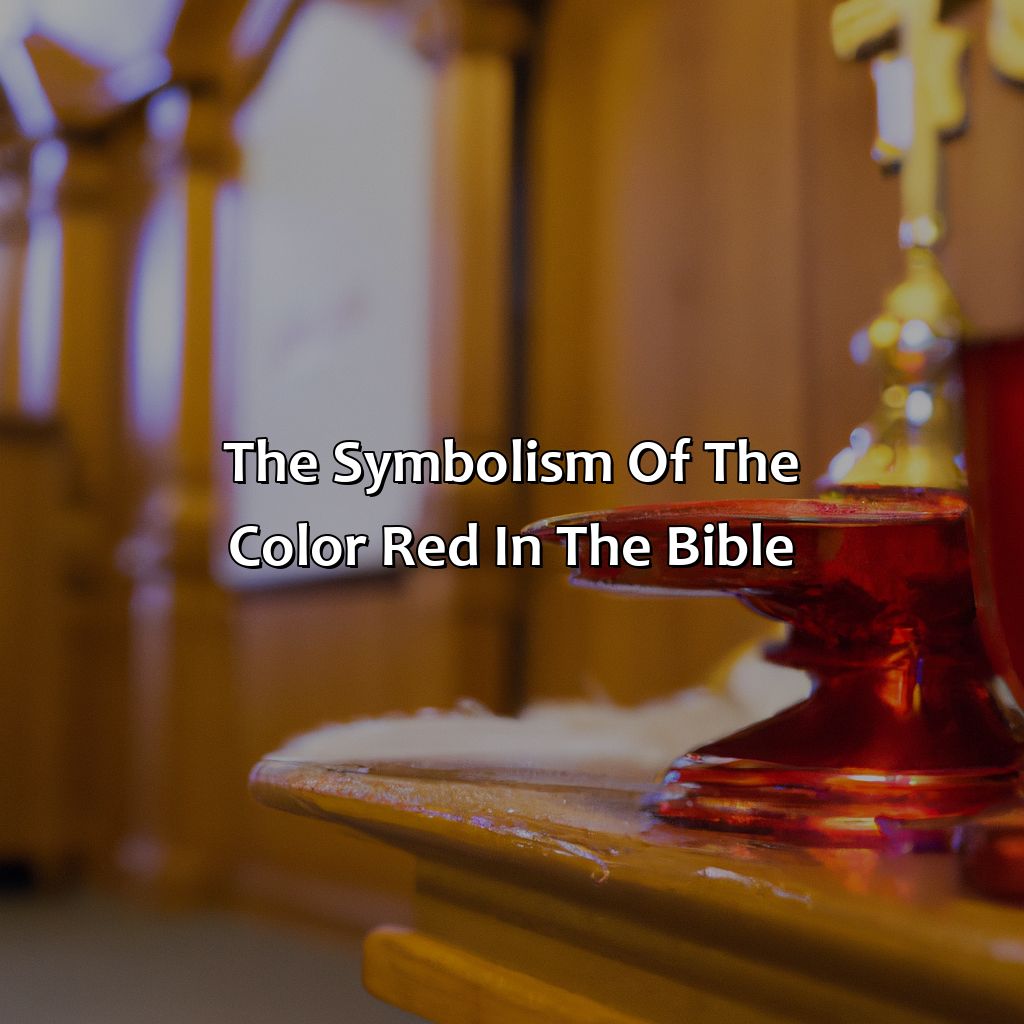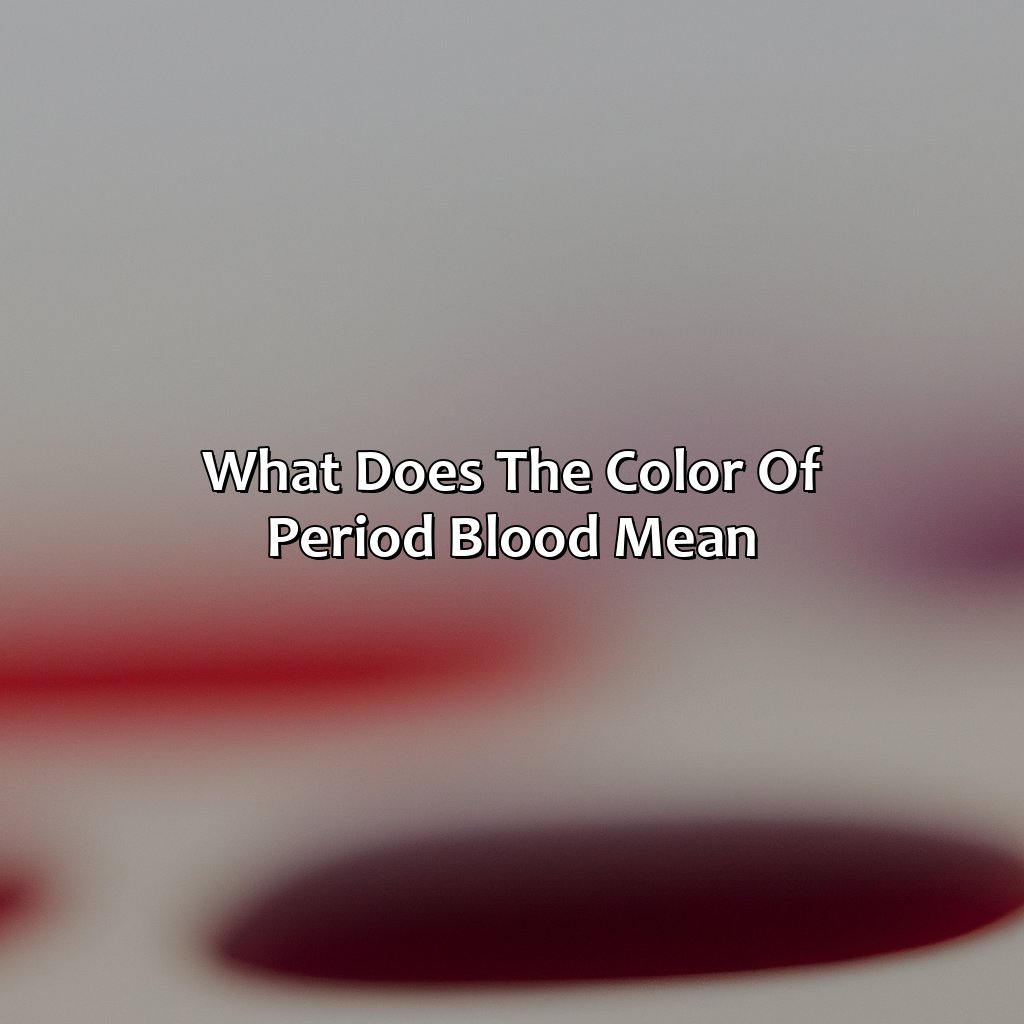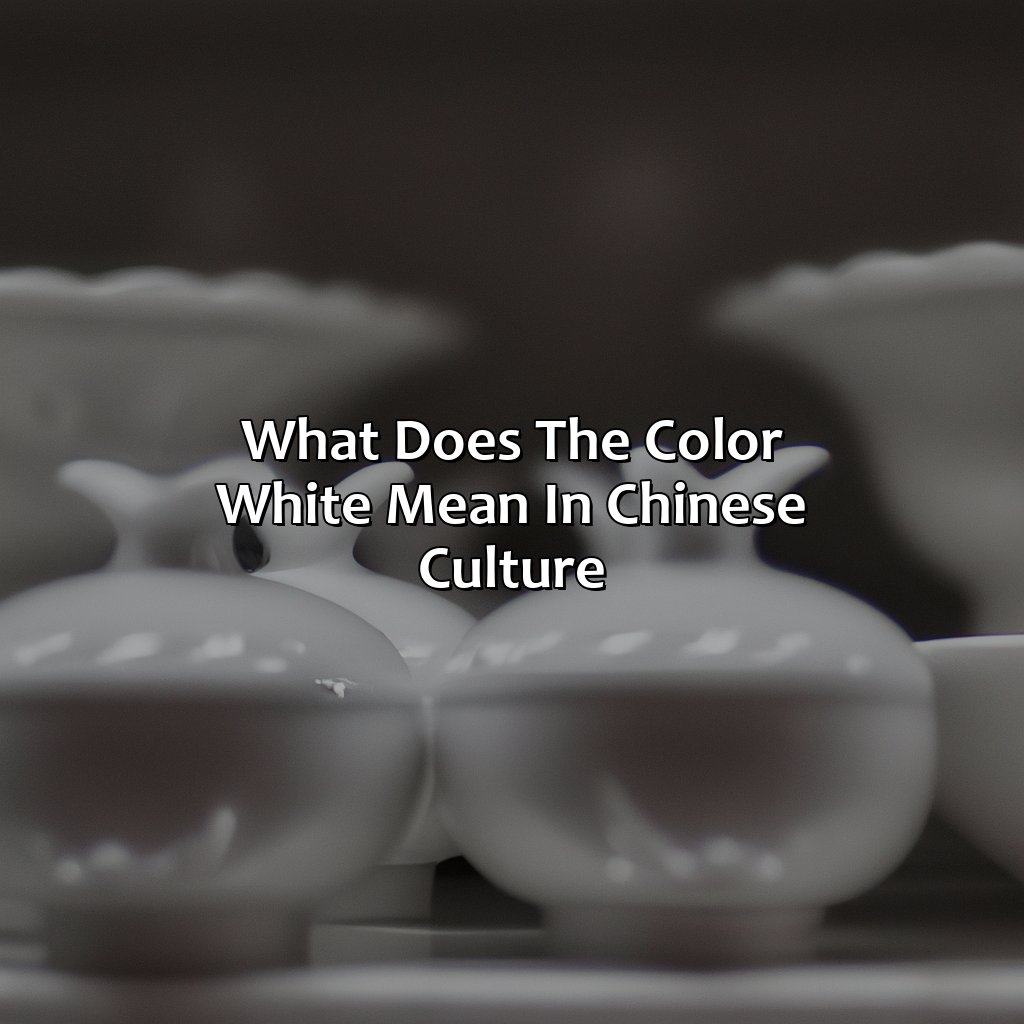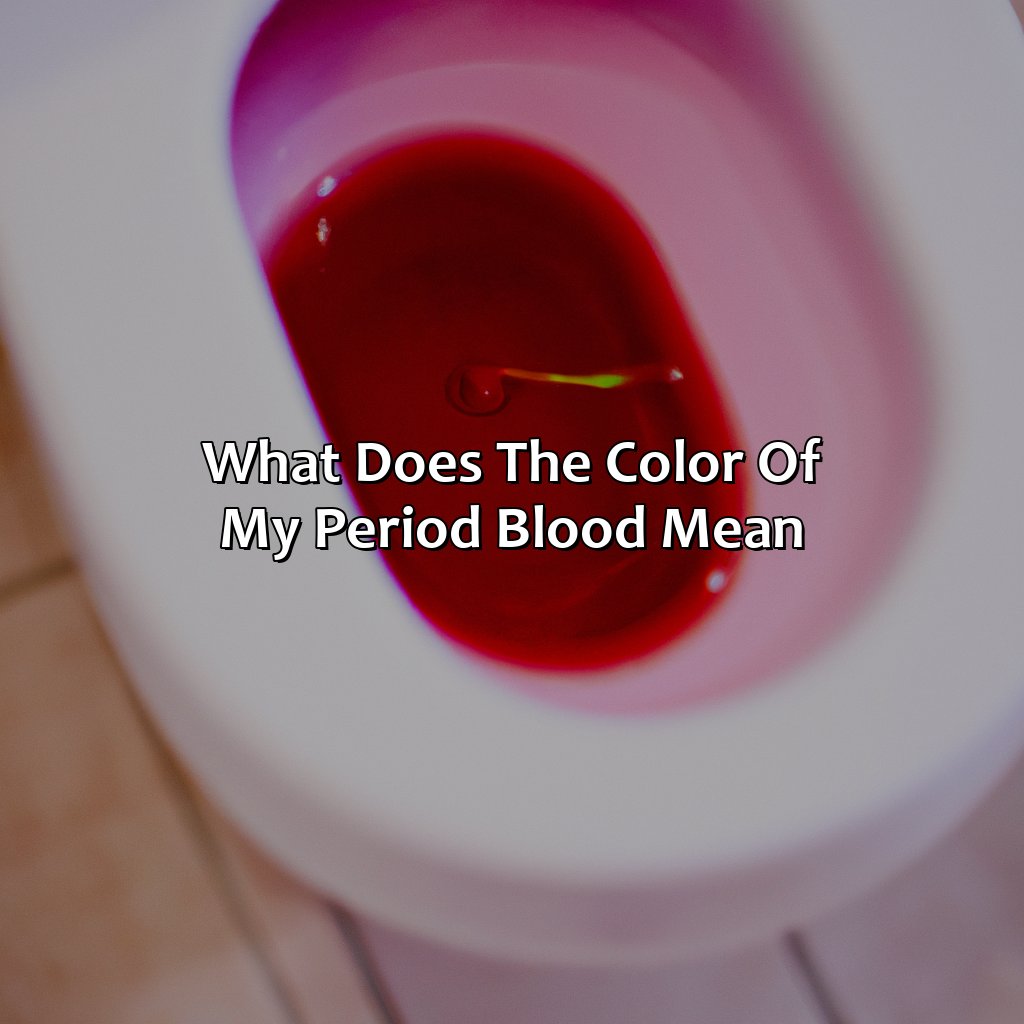Key Takeaways:
- Red is a significant color in the Bible, symbolizing sin, guilt, and warning. However, red is also associated with sacrifice and redemption, with the blood of Christ being a powerful redemptive force.
- Red is also portrayed as a color of power and passion, with references to fire and biblical storytelling emphasizing the emotion behind the color. References to the color red in biblical narratives include the red dragon in the book of Revelation and the red heifer in the book of Numbers.
- Interpreting and applying the symbolism of red in personal life and in Christianity requires careful consideration of the biblical context. Red can represent faith and love, and is often used in Christian iconography to convey powerful messages of hope and redemption.
The symbolism of the color red in the Bible

Photo Credits: colorscombo.com by Brian Brown
We explore the symbolism of the color red in the Bible. We divide this into three sections.
- The first looks at red with sin and guilt. It is a warning color in the Bible.
- The second section examines blood as a symbol of sacrifice and redemption. We focus on Christ’s blood and its redeeming power.
- The third section discusses red as a color of power and passion. We look at its use in biblical stories and Christ’s passion.
The association of red with sin and guilt
The Negative Connotation of Red Color in Biblical Texts
Red in the Bible is often associated with sin and guilt. This color has been used as a symbol of negative emotions, such as anger or hate, and has been closely linked with the first humans’ original sin. The Bible uses red as a warning color, representing danger, temptation, and the devil himself.
Furthermore, the Book of Leviticus declares that anything contaminated by blood is impure; it emphasizes the symbolic relationship between red as a color of sin and guilt and human bloodshed. Among all colors in the Bible, red is singled out for its negative associations.
Interestingly enough, no matter how negatively connected red may be to certain themes in biblical texts; it can also represent something positive. From sin to salvation, the color red flows through the Bible, symbolizing the very blood shed by Christ for our redemption.
The use of blood as a symbol of sacrifice and redemption
Blood as a Redemption Symbol in Biblical Narratives
Red and blood in the Bible are significant symbols of sacrifice, redemption, and forgiveness. The blood spilled by sacrificial animals has been used as a symbol of atonement for sin throughout the Old Testament. However, it was Christ’s death on the cross that elevated the redemptive power of the color red and blood to unparalleled heights. This use of red to represent sacrifice and redemption is not uncommon in biblical narratives.
The significance of Jesus’ crucifixion is seen in the depiction of his blood as a representation of pure love, divine wrath against sinners, and absolute sacrifice. The color of Christ’s blood in the Bible spells out his humanity and divinity while also portraying him as a willing saviour who laid down his life for all mankind. The shedding of Christ’s blood marked his ultimate sacrifice after which believers could obtain eternal life by accepting him into their lives. The concept reflects symbolism whose roots can be traced back to Israelite sacrifices where sins were forgiven through animal bloodshed and represents complete surrender to God.
To apply this symbolism personally lets us realize that our salvation through Christ’s work on Calvary means that any shame or guilt associated with our past misdeeds need no longer bind us since we have been pardoned by His love. It affirms God’s promises made possible through His grace despite our unworthiness, mercy despite our failures, compassion despite our weaknesses.
In Christian liturgy, red continues to be used as a symbol for sacrifice and purity. The presence of red relics such as robes or cassocks during church services help reinforce these ideas within worshipers’ minds. Evangelists inspire followers by using red symbolism, shining light on Christ’s bloody suffering–a reminder of what free moral agents now gain access to because he overcame death.
Understanding colours’ meaning–the colour red included–enables us to comprehend texts better, interpreting culturally informed writers from different centuries and places. Red being a colour that signifies passion and power intensifies the emotive force of biblical stories where it has been used symbolically. Red in the Bible is more than just a color; it’s a symbol of fiery power and unbridled passion that drives the human soul.
The portrayal of red as a color of power and passion
Red has been symbolically linked with power and passion in the Bible. This association has its roots in the use of red as a symbol of fire, which is itself a source of energy, strength, and even danger. Christ’s passion is also interpreted through the color red, which refers directly to the torrent of blood our savior shed on his crucifixion.
Biblical storytelling makes ample use of red for this reason, portraying it as an intense color with great significance and meaning. On occasions when characters display boundless energy or exceptional bravery, their clothing or other depictions are shown in shades of red.
An interesting connection between these two interpretations can be found in the story of Sampson from Judges 16:19. According to this tale, Sampson uses his great strength – itself fueled by a fiery passion for God – to break free from his chains as he stands up and takes revenge on behalf of Israel.
Pro Tip: The mention of passions in Christian theology reminds us that love is all-encompassing and transformative; this interpretation makes clear why red comes to represent both kinds of power manifested in those who they serve over time. Red is not just a color, it’s a character in biblical narratives, from the high priest’s garments to the red dragon in Revelation.
Examples of the color red in biblical narratives

Photo Credits: colorscombo.com by Frank Rivera
To learn about the color red in the Bible, focus on its use in biblical narratives. This will help understand its symbolism and meaning. Topics like the red dragon in Revelation, the red garments of the high priest, and red in Daniel are covered. Sub-sections then explore stories like Jacob and Esau’s birthright and Rahab’s rescue with scarlet thread. These look into the importance of red in these stories.
The story of Jacob and Esau’s birthright
The narrative surrounding Jacob and Esau’s birthright explores the symbolism of red as it pertains to inheritance and tradition. Esau, the firstborn son, was entitled to inherit his father’s possessions and blessings. However, when Jacob tricked him into trading his birthright for a bowl of red lentil stew, he became the rightful heir. The color red is significant in this story as it represents the value placed on cultural practices such as birthright succession.
Moreover, this biblical account highlights how greed can motivate people to disregard tradition and betray their own family members. By placing emphasis on the importance of lineage and inheritance, it promotes an understanding of familial bonds that aligns with biblical values.
Pro Tip: Understanding the symbolism of colors in biblical narratives can enhance one’s interpretation and analysis by providing insight into hidden meanings.
Rahab’s rescue proves that even a humble crimson worm can symbolize redemption in the Bible.
The use of scarlet thread in Rahab’s rescue
The scarlet thread’s significance in Rahab’s rescue illuminates the profound implications of color symbolism in the Bible. The crimson worm in the bible represents salvation, and this symbol is reflected in Rahab’s escape from Jericho through a scarlet cord descent from her window. This act of faith spared her family and ultimately played a pivotal role in God’s plan to move his people towards safety. The scarlet thread in the bible served as a mark of protection, purity, and promise- all elements that tie into Rahab’s story.
An essential theme presented by the story is that while sin stained lives who call upon their faith can still find redemption in God’s almighty hand. The scarlet thread provides visual proof of this message by offering assurance of deliverance if we believe. Another aspect that catches attention is how colour offers an instantaneous entry point for understanding complicated theological concepts to those less versed with biblical teachings.
What makes the practical application more potent is how color symbolism can be applied beyond mere representations. It can become integrally tied to how we understand ourselves or even God’s work here on earth. While it may seem like an insignificant detail sometimes, when aspects such as the crimson worm are woven into larger narratives, what emerges are not just allegories but living testimonies of faith and triumph over vice.
Don’t have these opportunities pass you by without digging deeper to uncover how they may profoundly affect your life. Whether it means learning more about biblical portrayals of colors or challenging yourself to be more intentional with images you associate with your faith- take action today and embrace profound translations given beneath the words often said so casually.
The red horse in Revelation shows that even in the apocalypse, the color red still means ‘stop, danger ahead.’
The significance of the color of the horseman in Revelation
The red horse in the Book of Revelation holds a great significance in the Biblical narrative as it represents war and bloodshed. The rider of the horse carries a sword and is given power to take peace from the earth, causing people to kill one another. This symbolic vision has been interpreted as an inevitable period of chaos before the end of times.
The use of color symbolism in biblical narratives stretches beyond just red heifer and ashes of purification. The red horseman also signifies the wrath of God towards sin and disobedience, and his judgment on those who have gone astray from his will.
It has been suggested that the red horseman could represent political upheaval or military conquests that result in widespread suffering. This interpretation aligns with historical events such as World War I and other conflicts that have caused immense human misery.
To apply this symbolism in personal life, one can strive to follow God’s will and avoid actions that could lead to societal strife. The color red can also be used as a reminder to pray for peace during times of conflict.
In Christian church symbolism, the color red is often associated with holy days such as Pentecost and the martyrdoms of saints. The blood-red robes worn by Catholic cardinals symbolize their willingness to sacrifice their lives for their faith.
Understanding color symbolism in biblical interpretation is crucial for gaining deeper insights into biblical teachings. Unlock the spiritual significance of the color red and explore its symbolic use in biblical narratives for personal growth and Christian symbolism.
Interpretations and applications of the biblical meaning of red

Photo Credits: colorscombo.com by Wayne Wright
Dig deeper into understanding the Bible’s symbolism of red. Explore its interpretations and applications. Reflect on the importance of recognizing color symbolism when interpreting the Bible. Discover how to apply the symbolism of red in your personal life. Uncover the role of red in Christian iconography. Gain a richer appreciation for the biblical significance of red.
How to apply the symbolism of red in personal life
The symbolism of red as a symbol of faith in the Bible is significant. Understanding this symbolism can help us apply it to our personal lives. Red is associated with sin, sacrifice, and power. The color also represents passion and love for others, especially during Passover.
The first step to applying the symbolism of red is to accept its meaning and importance in biblical history. Once we can understand its significance, we can use it for personal reflection and growth. For example, we could meditate on repentance and guilt or find ways to serve others passionately.
Using the color red can also deepen our faith in Christianity. Traditional church décor includes red elements on important holy days like Christmas and Pentecost. We can use red in our own spiritual practices as well.
Last but not least, understanding color symbolism in biblical interpretation is essential for building solid foundational knowledge about God’s word. Colorful descriptions can enhance our reading experience and provide a more profound meaning for scripture passages.
According to true history, the significance of the color red was crucial during Passover ceremonies many centuries ago. The blood that covered doorposts during the Israelites’ time in Egypt showed their faithfulness to God’s commandments and delivered them from danger. In modern times today, using symbols like these colors continue humanity’s ancient connection with beliefs passed down through generations.
From the red letter bible to Christian iconography, red represents the love and sacrifice of Jesus in the church’s symbolism.
The role of red in Christianity and church symbolism
Red serves as an essential color in Christian iconography, with a wide range of meanings and symbolic representations. Red is believed to represent the blood shed by Jesus Christ on the cross, which became the cornerstone of Christianity. The use of red color in Christian art and architecture emphasizes its importance in Catholic liturgy, where it evokes love, sacrifice, passion and the Holy Spirit.
The red letter bible is another example of how red has been used to highlight significant passages in the Bible. Red ink was used to emphasize scriptures that directly attributed words to Jesus Christ.
Red also signifies love and is associated with martyrs’ deaths throughout history. In times of celebration, such as Pentecost or on Palm Sunday, red vestments and decorations are used in the church to signify joy.
In addition to religious symbolism, red represents power and vitality and plays a crucial role in different cultures worldwide. Although there is no shortage of interpretations regarding what “red” means biblically, it can be concluded that it holds a lot of significance across different religions and cultures.
Understanding the symbolism of red in the tabernacle and prophetic dreams adds a deeper layer of meaning to biblical interpretation.
The importance of understanding color symbolism in biblical interpretation
Understanding the Symbolism of Red in Biblical Interpretation is vital since colors are used to convey meaning and understanding. The color red has profound implications, ranging from sin and guilt, sacrifice and redemption to power and passion. By comprehending these symbolic meanings, readers can decipher underlying themes and messages accurately.
The color symbolism of red in the Bible extends beyond mere interpretation into real-life practical applications. This could range from making decisions that reflect self-sacrifice and forgiveness in keeping with the blood symbolism or exuding leadership qualities by tapping into its representation of power.
In addition to usage during interpretation, some Bible stories feature specific examples of how colors such as red are employed. When interpreting Scripture, these unique elements contribute significantly towards understanding context. These stories include the symbolism of red in the tabernacle and the use of red in prophetic dreams.
It is worth noting that scholars have explored biblical texts since antiquity for their linguistic, cultural, historical and theological values. Therefore, delving into color symbolism equally benefits sound scriptural preservation.
Notably, Jewish rabbis considered color studies a vital element in Torah interpretation. So much so that they developed a methodology long ago that considered numerical patterns alongside contained hues’ symbolic meanings.
Five Facts About What Does The Color Red Mean Biblically:
- ✅ In the Bible, the color red symbolizes sin and judgment. (Source: Christianity.com)
- ✅ The Israelites used red dye made from the insect called “coccus ilicis” to color priests’ garments and other sacred objects. (Source: Bible Study Tools)
- ✅ The book of Revelation describes a red horse in the Four Horsemen of the Apocalypse, which symbolizes war and bloodshed. (Source: GotQuestions.org)
- ✅ In the Old Testament, the sacrifices for sin were to be made with a red heifer. (Source: Bible Gateway)
- ✅ The blood of Jesus, shed on the cross, is often depicted as red and is seen as a symbol of redemption and salvation. (Source: Catholic Exchange)
FAQs about What Does The Color Red Mean Biblically
What does the color red mean biblically?
In the Bible, the color red represents both sin and redemption. It is often associated with blood and sacrifice, symbolizing the ultimate sacrifice of Jesus Christ on the cross. Red can also represent passion and love, as seen in the Song of Solomon.
Is there a specific biblical reference to the color red?
Yes, there are several references to the color red in the Bible. One notable example is in Isaiah 1:18, where God says, “Though your sins are like scarlet, they shall be as white as snow.”
What does the color red symbolize in Christian art?
In Christian art, red is often used to represent the blood of Christ, as well as the Holy Spirit and the fire of God’s love. It can also symbolize martyrdom and the suffering of believers.
What does wearing red symbolize in biblical times?
In biblical times, wearing red was often associated with royalty and power. It was also used to symbolize sin and immorality, as well as luxury and wealth.
Does the color red have any significance in the Book of Revelation?
Yes, in the Book of Revelation, the color red is associated with war and violence. It is used to describe the horses of the Four Horsemen of the Apocalypse, who bring death and destruction to the earth.
What is the significance of the Red Sea in the Bible?
The Red Sea plays an important role in the Bible, as it was the body of water that God parted for the Israelites to cross on their way out of Egypt. This event symbolizes God’s power over nature and his faithfulness to his people.





